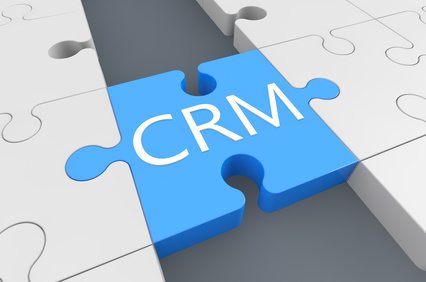
Getting to the Heart of eMarketing
by Julie Amos, Chief Strategy Officer
 Recently, legal marketing professionals from around the globe gathered in New Orleans for the 2018 Legal Marketing Association Annual Conference. One breakout session titled, “Humanity Isn’t a Trend – It’s the Key to Digital Marketing and Branding Success,” presented by Terry Isner, CEO at Jaffe, was an insightful directive for legal marketers to “remember that, regardless of technology, there is always a person on the other end looking for something … most likely your lawyers’ help.”
Recently, legal marketing professionals from around the globe gathered in New Orleans for the 2018 Legal Marketing Association Annual Conference. One breakout session titled, “Humanity Isn’t a Trend – It’s the Key to Digital Marketing and Branding Success,” presented by Terry Isner, CEO at Jaffe, was an insightful directive for legal marketers to “remember that, regardless of technology, there is always a person on the other end looking for something … most likely your lawyers’ help.”
Terry’s presentation provided a timely and targeted reminder that no matter the medium,

GDPR and CASL: Why Data Privacy Rules Are Good for Data Quality
by Rachel Fields, Client Success Consultant

For professional services firms, compliance with regulations such as the General Data Protection Regulation (GDPR) in Europe and the Canadian Anti-Spam Legislation (CASL) can feel like a thankless burden. Without a doubt, data privacy regulations are forcing most organizations to change the way that data is handled in their CRM systems. But it’s not all bad news. In fact, there are benefits to be had from these process changes other than just the relief of knowing you are compliant with the regulations.
The GDPR requirement of recording of express consent from contacts before sending them a newsletter or an event invitation may seem initially seem harsh,
Dealing with Data Quality Depression
Nothing can be more frustrating than dealing with data quality. But when it comes to CRM success,
there are few things that are more important. While data quality tasks can be a monotonous and
mundane job, left ‘untreated’, a CRM database can rapidly deteriorate into a major headache, causing
end users to doubt and distrust the data – and refuse to use the system.
The First Step
The first step in dealing with data quality depression is admitting you have a problem – or lots of them.
Your end users are out of control.

Building Quality Data – A Sound Structure for Your CRM
The quality of the data in your CRM is essential to maintenance of a strong CRM system. Just like the foundation of a building, when building out your CRM system, a solid data structure is essential. Additionally, once your system structure is complete, its integrity needs to be maintained. Good data quality is the key to getting results and return on the substantial investment in your CRM system. Sound CRM data helps to maximize productivity, enhance communication and expand your client base.
Structural Issues
But building good CRM data quality can also be challenging.

Contact Management 101: 10 Top Tips for Success
– By Christina R. Fritsch, JD, Client Success Consultant
 As the new school year gets underway and students get back to class, it seems like a good time to share a few lessons on contact and relationship management. One group of ‘pupils’ for whom this information can be particularly relevant is new attorneys who are joining a firm for the first time and who are eager to get to the head of the class by focusing on marketing and business development early in their careers.
As the new school year gets underway and students get back to class, it seems like a good time to share a few lessons on contact and relationship management. One group of ‘pupils’ for whom this information can be particularly relevant is new attorneys who are joining a firm for the first time and who are eager to get to the head of the class by focusing on marketing and business development early in their careers.
It may seem to many people that contact management skills should come naturally lawyers,

Contact Management 101: Caring for Your Most Important Assets – Relationships
by Chris Fritsch, Client Success Consultant
 To help communicate the importance of centralized contact management, we have compiled 10 top tips:
To help communicate the importance of centralized contact management, we have compiled 10 top tips:
- Think of contact management as an investment. Contacts are valuable commodities and investing just a little time up front can pay dividends in the future.
- Value your relationships. For attorneys, there is almost no more important contributor to career success.
- Capture complete information. Without key details, you can’t effectively communicate with contacts.
- Update contact information regularly. Up to 30% of contact information changes each year,

Contact Management 101: Understanding the Payoff
by Chris Fritsch, Client Success Consultant

The reasons why attorneys manage their contacts in different ways isn’t important, but the challenge this presents for law firms is. A centralized collection of clean, correct and complete contacts is critical to effective marketing and business
development. Additionally, having contact and relationship information outside the firm’s central systems and security may present additional problems. As a result, many firms may find it important to get attorneys to develop consistent practices for centralized contact management.
So, what is the best way for firms to control the contact conundrum?

Contact Management 101: So Many Contacts, So Many Ways to Manage Them
by Chris Fritsch, Client Success Consultant
 While formal contact management may be foreign to younger lawyers, this isn’t necessarily a generational issue. In fact, we now frequently find that even some of the most experienced lawyers are managing their contacts in different ways. The issue also isn’t caused by inattention or idleness. Actually, there are a number of valid reasons why changes in contact management methodologies have been taking place, such as:
While formal contact management may be foreign to younger lawyers, this isn’t necessarily a generational issue. In fact, we now frequently find that even some of the most experienced lawyers are managing their contacts in different ways. The issue also isn’t caused by inattention or idleness. Actually, there are a number of valid reasons why changes in contact management methodologies have been taking place, such as:
- Attorneys are out of the office more often today, so it’s critical to have contacts on their mobile devices where they can easily access them
- Advances in search technology have made it easy to find contacts anywhere,

The CRM Marathon – and the Data Dash
by Raquel Lewis, CRM Success Consultant and Chris Fritsch, Client Success Consultant

Along the CRM implementation route, data quality issues are a common hurdle for every organization. Here’s why: during a law firm CRM rollout, thousands of shared contacts quickly flow into the system from users. Some of these records contain incomplete or outdated information. Others are shared by multiple users, which will create a considerable number of duplicate records.
Attorneys are trained to notice errors, so if bad data is not addressed promptly, it will lead to distrust of the system.

The Dollars and Sense of Cleaning Up Your CRM Data
 Few people will disagree that good CRM data is essential for effective marketing. Despite that fact, bad data has become endemic in marketing databases everywhere. Not only does this result in frustration for many marketers (and overtime work for many data stewards), it also has some significant hard costs associated with it. In fact, a few years ago, research from leading research and advisory company, Gartner, indicated that poor-quality data was costing organizations on average $14.2 million annually. On the other hand, clean, correct and complete contact data can positively impact your bottom line and lead to return on your marketing investments.
Few people will disagree that good CRM data is essential for effective marketing. Despite that fact, bad data has become endemic in marketing databases everywhere. Not only does this result in frustration for many marketers (and overtime work for many data stewards), it also has some significant hard costs associated with it. In fact, a few years ago, research from leading research and advisory company, Gartner, indicated that poor-quality data was costing organizations on average $14.2 million annually. On the other hand, clean, correct and complete contact data can positively impact your bottom line and lead to return on your marketing investments.

Data Quality Do’s & Don’ts – Part 2: The Missing Pieces of Your CRM Success Puzzle
The holidays are long over and the scramble to send out holiday mailings seems like ancient history. But don’t close the book yet! How successful was your mailing? One measure of success – or failure – is your bounce rate. If you haven’t taken a close look at your mailing performance metrics, now is a good time to do so to gain some valuable insights about your CRM data quality.
If your mailing performance was less than stellar, one common cause is missing pieces of contact data in your CRM. Without complete CRM contact data, it can be challenging or impossible to communicate with your contacts – which is the whole reason most organizations invest in a CRM system in the first place.

Data Quality Do’s and Don’ts – Part 1: Degrading Data Quality
In today’s highly mobile market, up to 30% of a firm’s CRM contact data quality can degrade each year. People get hired, fired, promoted and change jobs; they move and change addresses; they get married and divorced; some retire and a few die. Adding to the problem is “garbage” aka typos, misspellings, transposed numbers and personal contacts. All of this potential for bad data means that if you don’t pay attention to data quality, your end users will begin to distrust the data and, by association, the CRM system. It’s also important to appreciate that your CRM data represents a very important asset – relationships,

CRM Building Project 2: Teardowns
Is it time for a CRM renovation or a tear-down?
Many of the firms we work with have had their CRM systems for years or even a decade or more. They can likely still remember their CRM building process and original “move-in” day when they first bought the system (which hopefully didn’t require a mortgage) and migrated all their information in. At that point, their CRM system felt like the perfect place to be.
Integrate, renovate… or start over?
Sometimes a firm begins to get “growing pains.” Over time, these firms may have acquired a lot more “stuff” and may feel like they are outgrowing their CRM home.

Data Quality Do’s and Don’ts – Part 5: Herding CRM Users or “Cats”
 Herding your CRM users or “cats” toward full participation is a challenge. The beauty of a CRM system is that by gathering and maintaining the collective information of all CRM users, contacts can be kept updated across the organization. If an attorney receives updated information for his contact but simply modifies the contact information in Outlook, the new information doesn’t flow to everyone who shares that contact. If that attorney updates the information in the CRM, everyone receives the new information and everyone wins. That is, everyone who participates….
Herding your CRM users or “cats” toward full participation is a challenge. The beauty of a CRM system is that by gathering and maintaining the collective information of all CRM users, contacts can be kept updated across the organization. If an attorney receives updated information for his contact but simply modifies the contact information in Outlook, the new information doesn’t flow to everyone who shares that contact. If that attorney updates the information in the CRM, everyone receives the new information and everyone wins. That is, everyone who participates….
CRM Users Win with Full Participation, Contact and Relationship Sharing,

Data Quality Do’s & Don’ts – Part 4: The Missing Pieces of CRM Contact Data
A common complaint is missing pieces of CRM contact data. This significantly reduces the value of the system for users and hinders CRM adoption. Let’s face it, it’s challenging enough to get people to actually use the system. When they finally do decide to go looking for information and can’t find it, it will be exponentially harder to get them to go there again.
 What’s even worse is that, without complete CRM contact data, it can be challenging or impossible to communicate with your contacts – which is the whole reason most organizations bought the CRM system in the first place.
What’s even worse is that, without complete CRM contact data, it can be challenging or impossible to communicate with your contacts – which is the whole reason most organizations bought the CRM system in the first place.

